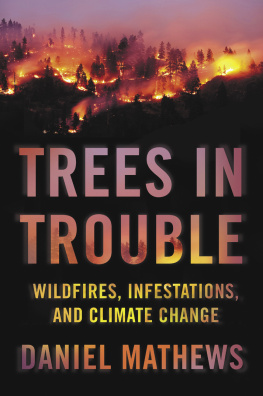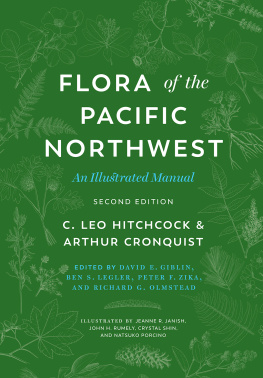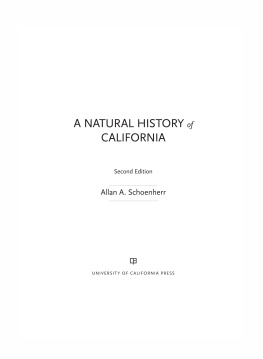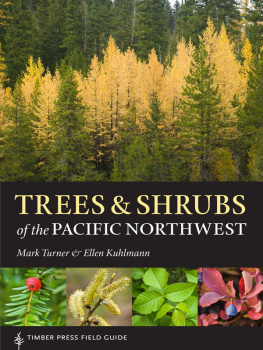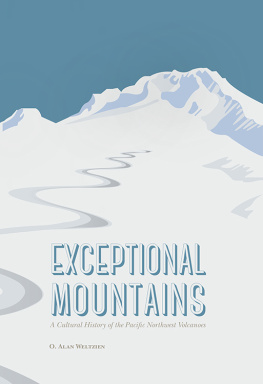

NATURAL HISTORY of the PACIFIC NORTHWEST MOUNTAINS
PLANTS ANIMALS FUNGI GEOLOGY CLIMATE
Daniel Mathews


This book is for
the fourlegged people
the standing people
the crawling people
the swimming people
the sitting people
and the flying people
that people walking
with them may know
and honor them.
CONTENTS














PREFACE
This book is a field guide to everything Northwest and montane: it wraps together all of the usual field guide categories under the sun. The key is in the wrapping together, as natures parts are infinitely intertwined. So Im going with Natural History in the title to highlight that grand symbiosis, as well as to give a nod to my forebears, the science writers of earlier centuries.
This is essentially an expanded and updated third edition of Cascade-Olympic Natural History. I enlarged the geographic range to include the mountains of southwestern British Columbia and coastal Oregonmountain ranges with different geologic stories, but absolutely part of the same region as defined by what lives there.
I expanded the coverage with 132 species that I could no longer bear to leave out. (How did I ever think I could skip dragonflies?) More than 100 scientific names have been updated.
I havent stopped traipsing around in the mountains, noticing new details, and coming up with new questions I have to find answers to. So revisions are salted throughout the book. And I read scientific literature as it comes out, and go to scientific conferences, gleaning countless fresh bits of information to add or adjust.
In the years since the second edition, hikers have seen wolves and wolverines in the Cascades. You could be the first to spot a fisher, following their reintroduction here, or a grizzly bear. The exceedingly rare Cascades red fox, on the other hand, is seen up close by all too many National Park visitors, since a few foxes have become habituated to food handouts.
That makes five charismatic carnivores with upticks in visibility. Yet threats outweigh the good news for biodiversity overall. Bees, bats, and amphibians, for example, are huge, numerous, ecologically invaluable groups of animals that are seeing dramatic declines.
Salmon populations have put up exciting numbers in some years: Fraser River sockeye in 2010 and Columbia River chinook in 2015 each had their best year in almost a century. These ups and downs remain mysterious. The 2014 Fraser run, after predictions that it would rival 2010, did not. Then the blob, a huge pool of abnormally warm water in the northeast Pacific that lasted for most of 2015, took a severe toll on that years Fraser run. Indirectly, the blob helped make 2015 Washingtons worst wildfire year since the days when fires ran unimpeded by humans.
Fire is an element in the one subtle but pervasive increased emphasis in this edition: how plants, animals, fungi, rivers, fires, and glaciers are responding to climate change, and what changes scientists predict during our lifetimes. The changes seen here, both in recent decades and in the few decades to come, are milder than those in many parts of the world. But the predictions are sobering. I hope that by spreading awareness of warmings ramifications I can help spur action to progress beyond the massive release of greenhouse gases.
ACKNOWLEDGMENTS
My profound gratitude goes out to Gary Braasch, photographer and reporter; friend and inspiration; steadfast optimist; uncanny eye for the image; and advocate for diverse populations of the natural world, who never let his activism spill over into antagonism to the human populations. He died in 2016 while snorkeling on the Great Barrier Reef in the course of documenting climate change. We are bereft.
And it goes also to the scientists who generously gave of their time to help me understand the Pacific Northwest. Blair Csuti, Kathie Dello, Eric Eaton, Jim Jackson, Aaron Liston, Bruce Newhouse, and Steve Trudell each reviewed a chapter and suggested improvements. Others talked or wrote to me about particular issues: Steve Acker, Keith Aubry, Scott Babcock, Ken Chambers, Gary Chastagner, Janet Coles, Steve Engel, Dan Gavin, Jerry Franklin, Keala Hagmann, Patti Happe, Mark Harmon, Mark Huff, Tim Hiller, Andrew Larson, Chris Marshall, Cliff Mass, Garrett Meigs, David Metzler, Steve Meyers, Lars Norgren, Dave Peterson, Dave Wagner, and Rick Westcott. I also owe much to countless scientists who dont know me from Adamsimply for doing and publishing their work. (But if I somehow still managed to get something or other wrong, thats on me.)
To the photographers and artists who generously gave of their gorgeous images. Their names are credited on page 556, but right here I want to proclaim the names Nick Dean, Ginny Skilton, Richard Droker, Walt Siegmund, and the late Doug Waylett and Jeanne Janish for their copious contributions. David Deis of Dreamline Cartography created the gorgeous maps, and was patient with me when I said, more than once, No, actually, can you change it to this....
To the team at Timber Press who whipped my sprawling manuscript and spreadsheets into the elegant artifact you hold in your hands: Mike Dempsey, Patrick Barber, Sarah Milhollin, Anna Eshelman, Susan Applegate, and Andrew Beckman.
To Sabrina, without whose companionship and steadfast support my writing work could not proceed. And to Gabriel and Margot, who hold me up emotionally with their encouragement and, for that matter, with their very existence.
ORGANIZATION
Each species account begins with common and scientific names. The word Also, when present, lists other names you may see for the same species. An identifying description follows, concluding with notes on likely location, habitat, and sometimes season.
Next page

